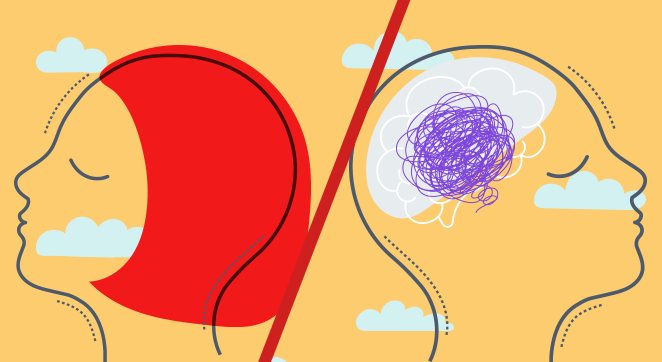Risks for harm skyrocket for people with disabilities during pandemic
Written by Dianne King
Occasionally, in the long news cycle that is 100% coronavirus (COVID-19) 100% of the time, the spotlight will focus briefly on the spread of the virus among people with intellectual and other developmental disabilities (IDD) living in state-run settings.
What is not mentioned in those stories is that people with IDD and other disabilities are not only at higher risk from COVID-19 in these more isolated settings — they’re also at higher risk for abuse, sexual assault, and neglect. The fewer people who are in and out of their lives on a daily basis, the fewer people there are to notice signs of abuse and sound the alarm.
When you add a global pandemic, care attendant shortages, and stay-at-home orders to the equation, the risk for harm skyrockets for all people with disabilities – those who live in group settings and those who live independently in the community.
“This pandemic is not like anything we’ve ever had,” said Nancy Crowther, an Austin community advocate who has spent the better part of the last 15 years promoting higher wages for underpaid Texas attendants, who make it possible for people with disabilities to live independently in the community. “In the disability world, if you use attendant services,* you are dependent on someone else to help to meet your basic needs. It makes our vulnerability all that greater.”
Rebekah Adams is a disability advocate and the legal guardian of Jimmy, a man with IDD who lives in a group setting with other people with IDD. During the pandemic, she cannot physically visit, and because he does not communicate verbally, she cannot call and talk to him by phone. Recently, however, she has been able to Skype to talk to the staff, and to see Jimmy’s face, which has reassured her.
Still, she is terrified that the virus will spread throughout the center, care providers and residents will get sick, and there will not be enough staff to provide services.
“I am depending on the staff to provide safe and appropriate services in a very chaotic time,” she said.
Although all people with disabilities are at higher risk of abuse, sexual assault, and neglect than people without disabilities, the risk is particularly high for people with intellectual and developmental disabilities, who are also more likely to live in group settings.
Nancy Crowther is a college graduate and a retired professional. She uses a wheelchair and attendant care to live independently in the community. She knows how to speak up for herself. Yet, even with her resources, during the more than 40 years that she has used community attendant care, she’s had to fire attendant staff who became a threat to her well-being. What worries her most about the people with IDD living in nursing homes, state institutions, or even group homes is that “they don’t have their safety network, they can’t reach out to anyone.”
To add to that, many people with significant disabilities or intellectual disabilities may not recognize abuse, may not be able to speak or report the abuse, and are frequently not believed if they do find a way to report.
To address her concern about Jimmy’s welfare, Rebekah makes frequent calls to staff and asks questions.
What is their COVID-19 plan? How do they plan to keep Jimmy safe? What is their plan to reduce his anxiety if he does test positive? She talks to as many staff as she can because each person gives her a little bit more information. In short, she has done everything she can to make staff aware that another person cares about and is monitoring Jimmy’s safety and well-being.
Whether they live in group settings or independently, people with disabilities who use attendant care providers are facing a bigger threat from COVID-19 than those who do not.
“If all things were the same, we’d have the typical issues in this pandemic that everybody would have” said Nancy. “You probably get sick of your husband, roommate, or whatever. But in the case of disability, you’ve got someone who is dependent upon another person for assistance to meet their daily needs, and that dependency doesn’t go away. It stays.”
Recognizing abuse
For some people with intellectual or other developmental disabilities, the only sign of abuse may be a change in behavior without another crystal clear explanation. A person may become more withdrawn, nervous, anxious, sad, aggressive, or angry. Even simple changes can be clues that something is wrong. Sometimes people stop wanting to do favorite activities, or start avoiding a certain place or person. Others start hoarding food or stop being willing to get undressed or use the shower. People may sleep more or less, have nightmares, or regress in toilet habits.
Other changes to watch for:
- Resistant to taking medication or allowing a care provider to provide personal care
- Exaggerated, startled responses to sudden movement
- Increase in worry or anxiety
- Is overly compliant or anxious to please
- Unusual or inappropriate expressions of affection
- Hitting or scratching care provider
* A care attendant assists, as needed, with preparing food, getting in and out of bed, dressing, eating, bathing, using the toilet, banking, and other needs.
Written by Dianne King, SAFE Disability Services Technical Writer
This project was supported by Grant No. 2017-UD-AX-0008 awarded by the Office on Violence Against Women, U.S. Department of Justice. The opinions, findings, conclusions, and recommendations expressed in this publication/ program/exhibition are those of the author(s) and do not necessarily reflect the views of the Department of Justice, Office on Violence Against Women.